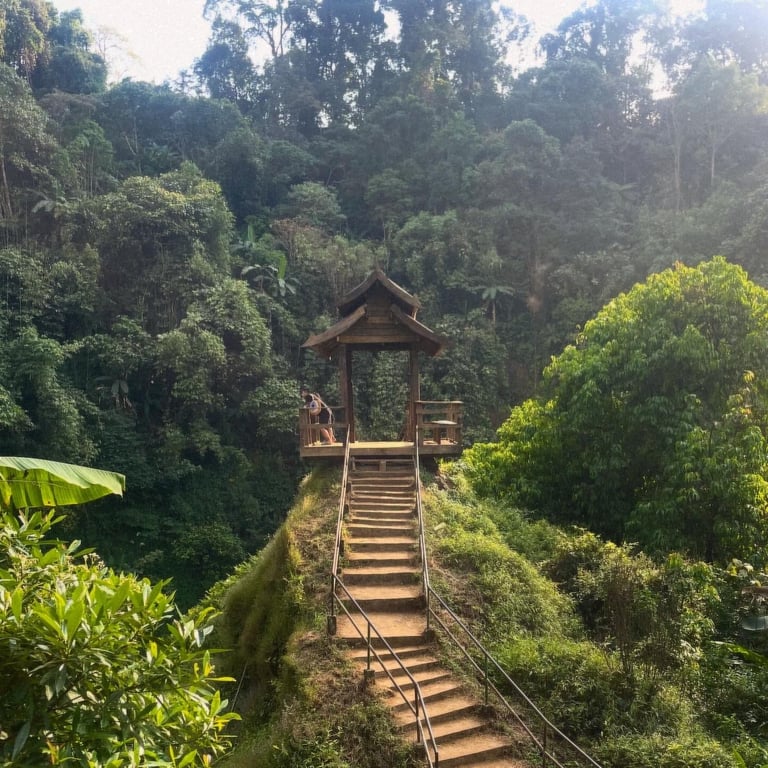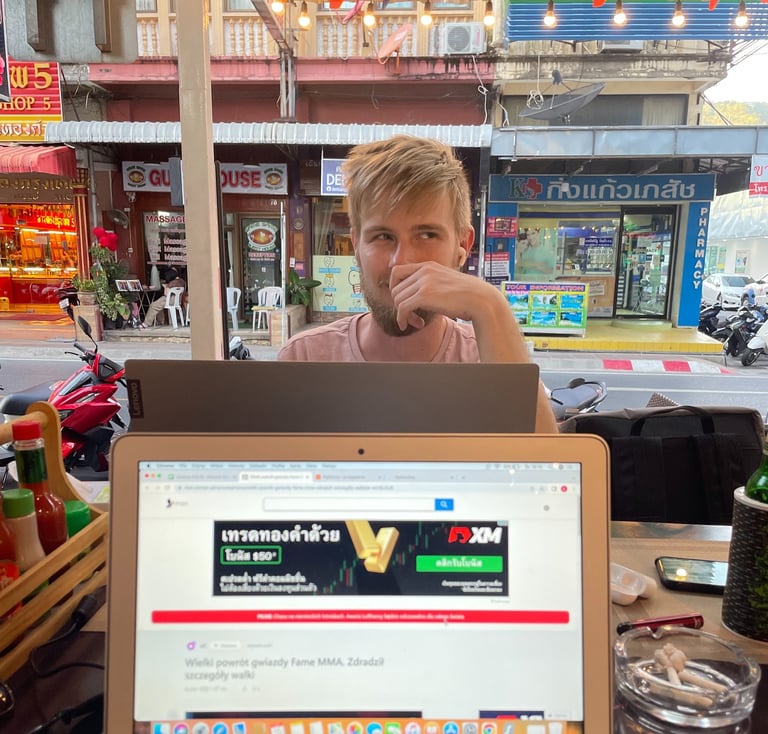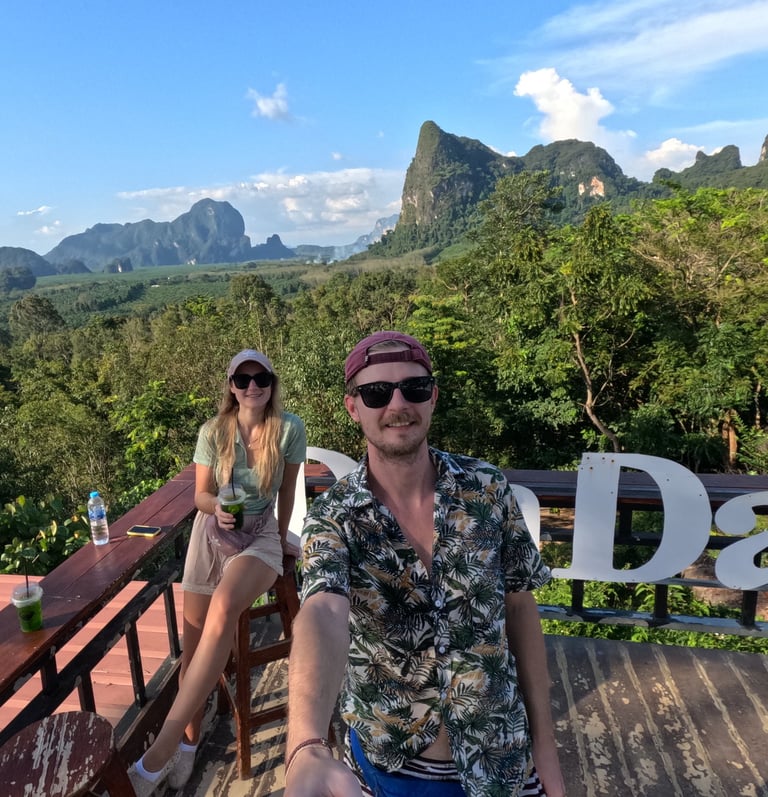
The hidden gem of southeast Asia
L A O S
What should you know before traveling to Laos?
Laos can’t really be compared to any other country we’ve visited. Maybe a bit to Bali - because of its breathtaking landscapes (though in my opinion, Laos easily wins here!) - and also because of its roads… The north isn’t too bad, since the Chinese, who are fiercely competing with the French for influence, have built a highway and extended a railway line from Vientiane, so they can hop over for the weekend and inhale some laughing gas. But south of the capital… well, let’s just say you’ll need both prayers and meditation to get through the ride 😂

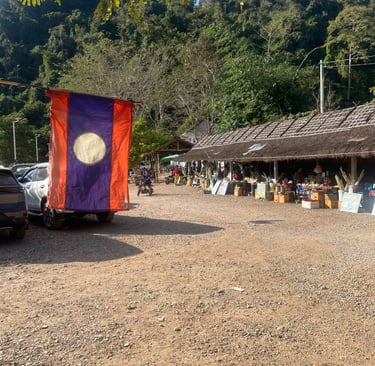
But let’s start the classic way - from the beginning.
Laos is one of the most fascinating and beautiful countries in Southeast Asia. However, it’s not a destination I’d recommend as your first visit to the region. If you haven’t been to Thailand, Cambodia, or Vietnam yet, and you’re determined to go - make sure to do some thorough research or get advice from someone with experience. Why? I’ll try to answer that below.

Where is Laos and what can
you actually do here?
Table of contents
Where is Laos
Short history of Laos
Government
Religion in Laos
Language
Currency
SIM card - Internet
Weather - when to travel to Laos?
Visa for Laos
Vientian
Luang Prabang
Vang Vieng
Laos - officially the Lao People’s Democratic Republic - is a landlocked country in Southeast Asia, located on the Indochinese Peninsula. It shares borders with China, Myanmar (Burma), Thailand, Cambodia, and Vietnam. As the only country in the region without access to the sea, Laos remains less visited by tourists - which is a real shame, because nature gave it many stunning substitutes for the ocean! :)
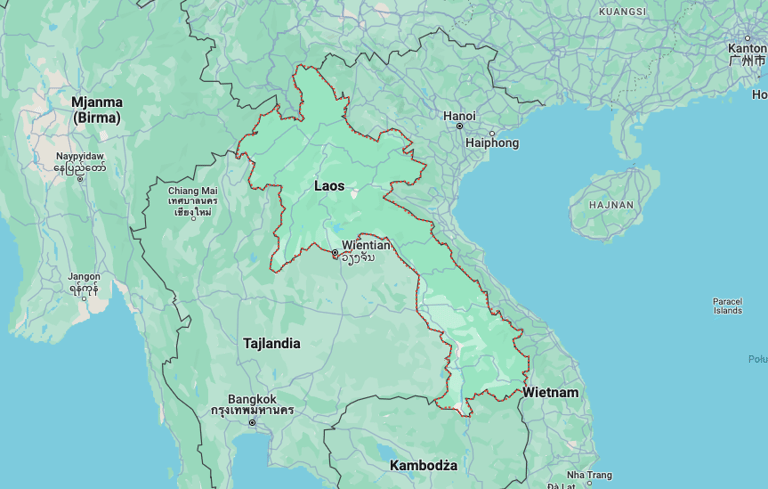

WHERE IS LAOS
SHORT HISTORY OF LAOS
Laos is a country with a rich and complex history. The key period in shaping its national identity was the 16th century, when one of the most powerful kingdoms in the region - Lan Xang, or “The Kingdom of a Million Elephants” - was established.
Under the reign of King Fa Ngum, Laos transformed from a loose collection of tribes and small states into a mighty empire. He was an ambitious ruler who united various ethnic groups under one rule.
The Lan Xang Empire stretched from what is now Cambodia to northern Thailand and Vietnam. Its capital, Luang Prabang, became the cultural, religious, and trade center of the region. During this time, Buddhism became the main religion of Laos, playing a key role in shaping Lao identity.
The Lan Xang era was one of flourishing art, architecture, and literature. Buddhist monasteries and schools grew in importance, becoming centers of learning and culture. Cities expanded, and trade with neighboring countries thrived.
The empire lasted until the early 19th century, when it weakened due to internal conflicts and pressure from neighboring powers.
After the fall of Lan Xang, Laos became a battleground for influence between Siam (Thailand) and Vietnam, before eventually falling under French colonial rule as part of French Indochina. The colonial period brought administrative and economic changes - but also exploitation and destruction.
After World War II, many Laotians demanded independence from France. In 1954, Laos finally gained it, but the country remained divided among political factions - including the Communist Party of Laos, supported by North Vietnam. This led to years of civil war and regional conflict.
During the Vietnam War (1960s–1970s), Laos suffered immensely. The United States carried out extensive bombing campaigns as part of the so-called “Secret War”, aiming to disrupt Viet Cong supply routes.
Over 2 million tons of bombs were dropped on Laos between 1964 and 1973 - making it the most heavily bombed country per capita in history. Millions of people were displaced, and hundreds of thousands were killed or injured.
Even today, unexploded ordnance continues to pose a threat, limiting agriculture, infrastructure development, and safe travel in rural areas. In some regions, you’ll still see signs warning travelers to stay on marked paths because parts of the land remain uncleared.
Despite these challenges, Laos continues to grow and modernize. The country is steadily working toward a safer, more prosperous future, while preserving its traditions and spiritual heritage. By visiting Laos, you directly contribute to its recovery and development.
Laos is a people’s republic. The head of state is the President, elected every five years by the National Assembly. The National Assembly holds legislative power, while executive power rests with the government. The Prime Minister, who leads the government, is appointed by the President with the approval of parliament.
The Lao People’s Revolutionary Party, founded in 1955, is the only legal political party in the country. The activities of other political parties are strictly prohibited.


GOVERNMENT


RELIGION
Laos is a Buddhist country, sharing many cultural and religious customs with neighboring Thailand. Monks are held in deep respect by locals. They are forbidden to touch or accept money, and offering it to them is considered an insult. Monks may only receive food donations from the faithful - but not all types of food are appropriate, so it’s best to ask locals or observe before making an offering.
The term “offering” also carries a different meaning here than in Western culture. In Buddhism, giving food to monks is not an act of charity but a spiritual exchange - a gesture of humility and gratitude. You should not expect thanks; instead, you should feel thankful that your gift has been accepted. Some monks take vows of silence, so don’t be surprised if they do not respond when spoken to.
It is forbidden to photograph monks without their permission - always ask first or take pictures discreetly from a distance, without disturbing their rituals or privacy. In Laos, as in Thailand, it’s common for young boys to spend time in a monastery to learn discipline, mindfulness, and humility. It is believed that this experience helps them grow into good husbands and fathers, leading a happy and virtuous life.
LANGUAGE
The official language of Laos is Lao (Laotian), which belongs to the Tai language family - closely related to Thai, though the pronunciation and script differ.
Here are a few basic phrases to get you started:
Hello - Sabaajdi
My name is… - Khoi seu...
Thank you - Kop dziaj
Sorry - Koo thot
Do widzenia - Lakon
Yes - Em
No - Boo


CURRENCY
The currency of Laos is the Lao Kip (LAK). The banknotes in circulation are: 50 000, 20 000, 10 000, 2 000, 1 000, 500, 100, 50, 20, 10, 5 and 1 kip.
10 000 LAK = 1,91 PLN
When it comes to money in Laos, you need to be very careful. First of all, all the banknotes look almost identical - honestly, it feels like they were designed to confuse tourists, especially since the same man appears on every single one 😂
Secondly, U.S. dollars and Thai baht are also widely used. Sometimes crafty vendors might give you change in a different currency - or worse, in two or three currencies mixed together, just to make sure you lose track of what you’re owed. In some cases, prices in USD are actually lower, so it’s smart to carry some cash in dollars. This helps avoid high ATM fees and can get you better rates for tours and activities. Be aware, though, that Laotians love adding commissions to everything. Pay in kip? They’ll add a fee because they’ll have to give you change in dollars. Pay in dollars? Another fee for exchange differences. Stick to the Google exchange rate and stand your ground - because in Laos, it’s very easy to get lost in the math when it comes to money.

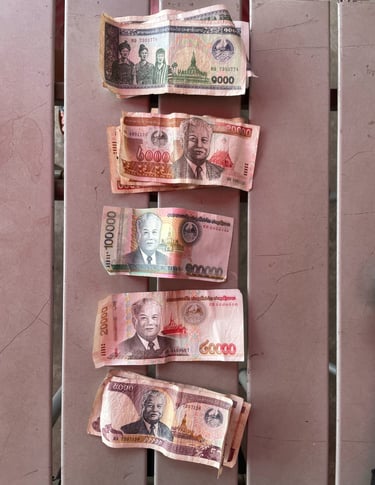
SIM CARD - INTERNET
This might surprise you… but we spent a whole month traveling through Laos from north to south without ever buying a SIM card 😅
Most travelers start their journey in Vientiane, as that’s where they usually arrive from Bangkok. In the capital, you’ll find shopping malls and plenty of mobile shops, where you can easily buy any SIM card for just a few dollars.
WEATHER - WHEN TO TRAVEL TO LAOS?
Laos has a tropical monsoon climate, meaning there are two main seasons: the dry season and the rainy season. The dry season usually lasts from October to April, while the rainy season extends from May to September. However, because of Laos’ diverse terrain, the north, center, and south of the country differ slightly in temperature and rainfall patterns.
Northern Laos (Luang Prabang, Nong Khiaw) is quite mountainous and significantly cooler than the rest of the country. If you’re planning a mountain trek, it’s best to avoid the rainy season when landslides can occur. December and January are the coldest months, with temperatures dropping below 18°C. We visited in December - and after warm Thailand, we actually felt cold!
If you want to explore the north, the best time is from mid-October to February. From March onwards, temperatures rise above 30°C, which can make sightseeing uncomfortable unless you enjoy the heat. The rainy season lasts from May to October, with showers usually occurring at night or early in the morning. Thanks to the rains, everything turns lush and green, and the air becomes fresh. The heaviest rainfall happens in August and September.
Central Laos is also mountainous but features both highlands and lowlands. The weather here combines northern coolness with southern humidity - the higher you go, the cooler it gets. When people mention Central Laos, they often mean Vang Vieng and rightly so, as it’s one of the most beautiful places in the entire country (more on that later). In Vang Vieng, the rainy season lasts from April to October, with the heaviest rain in July. The coolest months are December and January (when we visited, temperatures were around 27–30°C), and the hottest months are from March to May.
The capital, Vientiane, is also part of Central Laos. The best time to visit is November to February, when rainfall is rare, and the weather is sunny and pleasant. From March to May, temperatures can reach up to 40°C, marking the beginning of the rainy season.

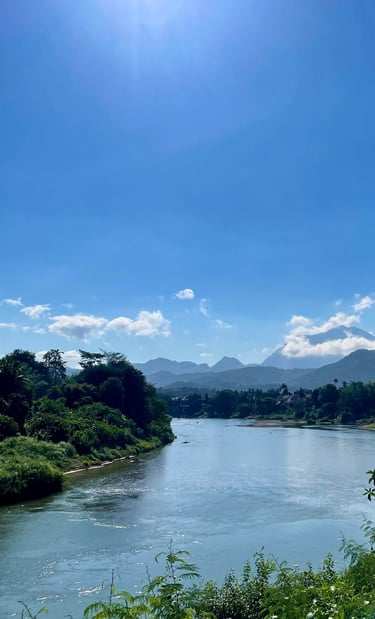

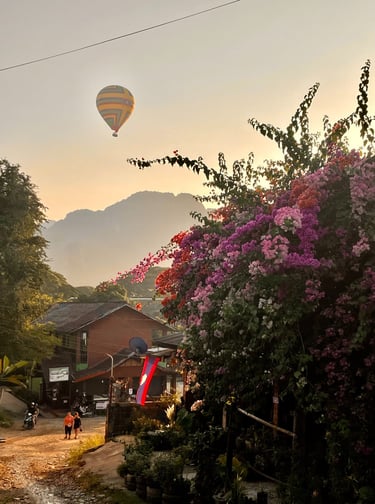

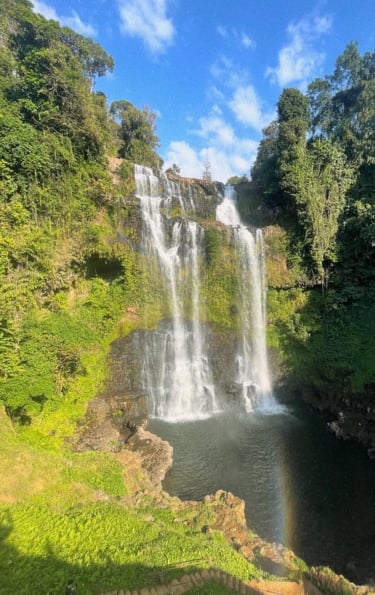
Southern Laos also has a dry season (December to March) and a rainy season (May to September). The landscape here is quite different—featuring the Bolaven Plateau and the beautiful Champasak Province along the Mekong River, known for its waterfalls, jungles, and the town of Pakse. The best time to visit the south is right after the rainy season, from November to January/February, when rainfall has eased but the water levels are still high enough for boat trips and the waterfalls are at their most impressive.
Does that mean you shouldn’t visit Laos during the rainy season?
Absolutely not! You can visit Laos any time of the year. During the rainy season, nature comes alive—the landscapes turn emerald green, and the waterfalls are simply breathtaking. The main advantage is lower prices - from flights and accommodation to tours. The downside is that access to certain areas may be limited due to flooding or closed hiking trails because of landslide risks. In my opinion, the best time to visit Laos - any region of it - is at the very beginning of the dry season, from November to the end of January.
Visa for Laos
Holders of Polish passports must obtain a visa to enter Laos. You can apply for it before your trip. Since there’s no Lao embassy in Poland, applications can be made through the Embassy of Laos in Berlin, online, or at certain border crossings.
Click here to apply for your Lao visa online.
Interestingly, at some border crossings - including the international airport in Vientiane - you don’t need to apply in advance. You can simply get a Visa on Arrival (VOA). Check here which border points are eligible.
To obtain the visa, you’ll need a passport valid for at least 6 months, one blank page for the stamp, and a completed visa form (provided on the plane before landing or at the border). You may also be asked for two passport photos (though ours weren’t required). The visa fee is 40 USD.
For now, just the basics. Stay tuned - soon we’ll be sharing detailed posts about the places we visited, what we paid, and lots of fun facts.
If you’re interested in Laos, let us know over on Instagram
— just click the photo below! :)

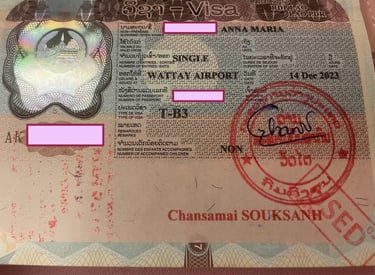
If you’re looking for organized tours in Laos, feel free to check out our GetYourGuide link.
By booking through it, you’ll be supporting our future travels - at no extra cost to you.

Need help planning your vacation?
Heading to Laos? Need someone to plan your holiday, or just a few tips and a chat? We’re here for you.
Drop as a line
Do you have questions about traveling to Asia? Suggestions for the blog? Want to collaborate? Need help or just want to meet for coffee?
Feel free to get in touch.

